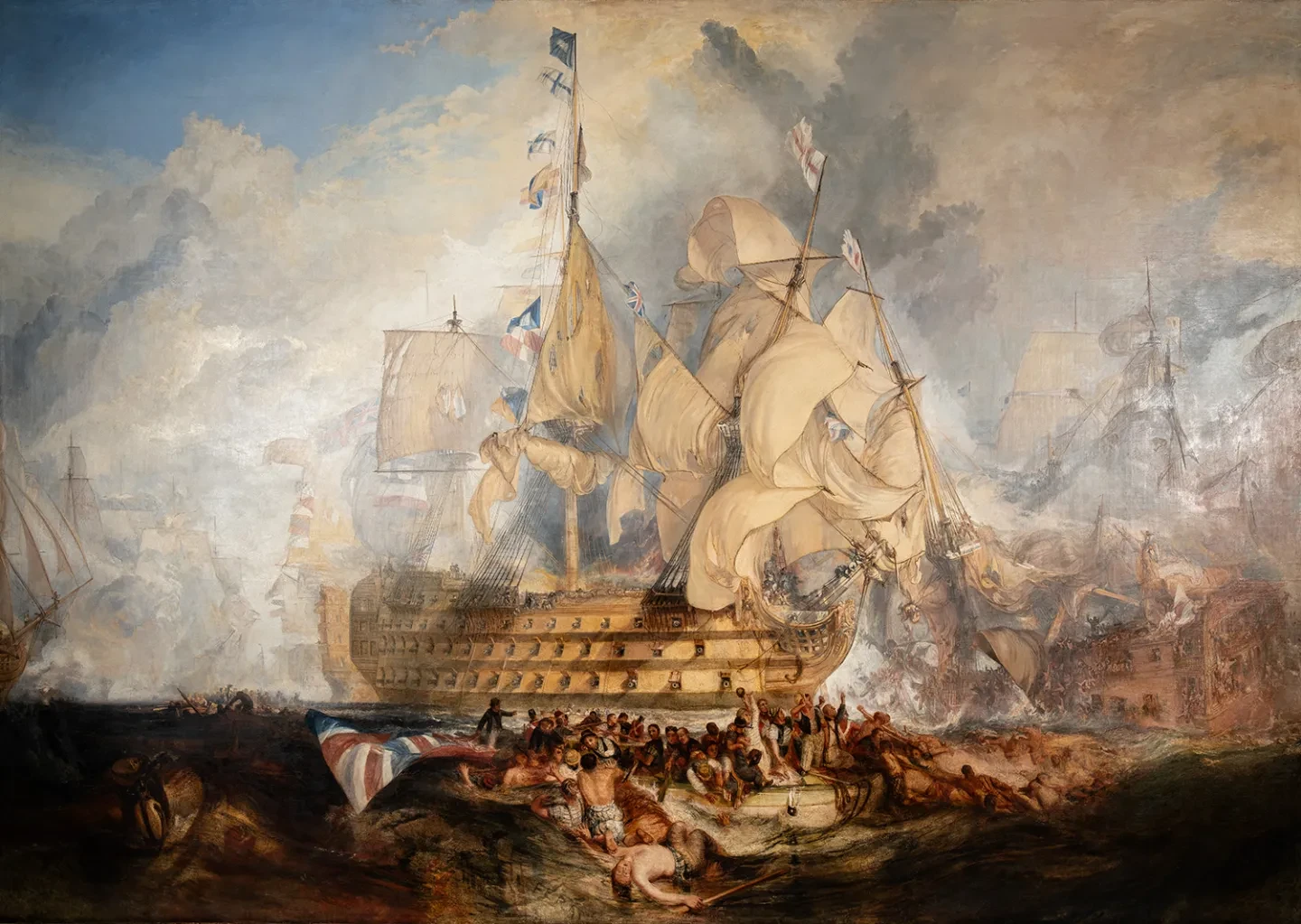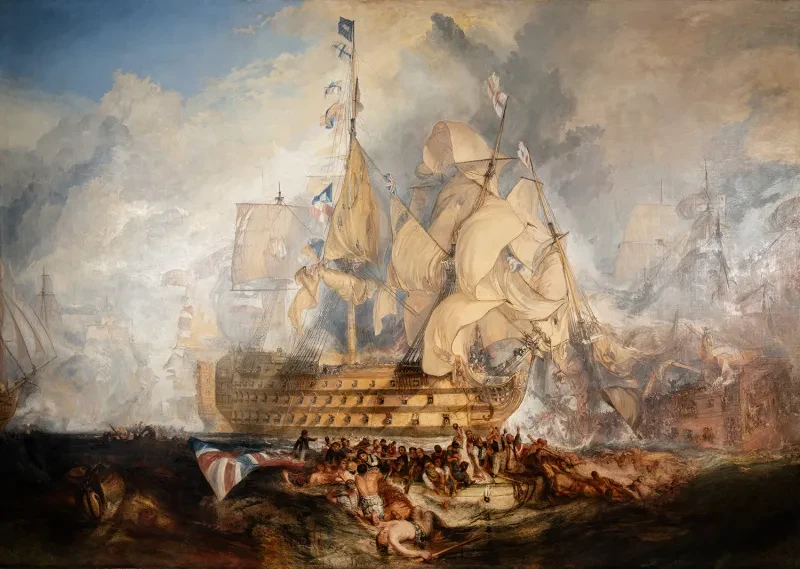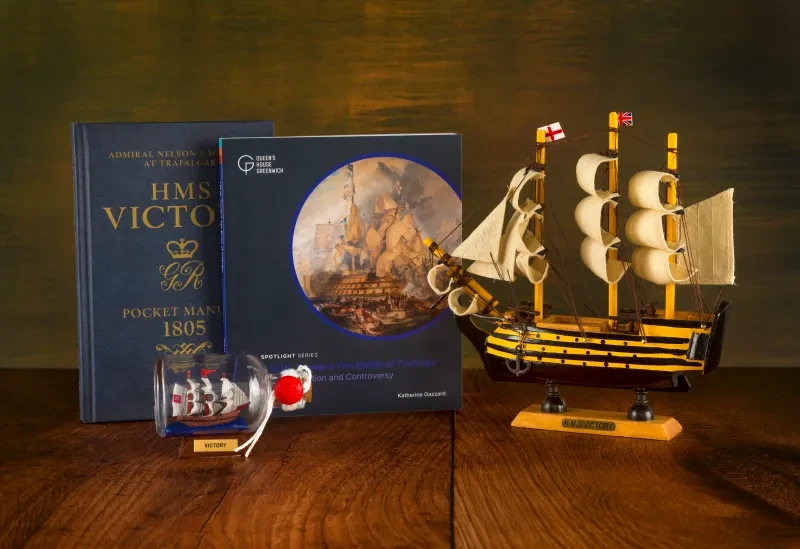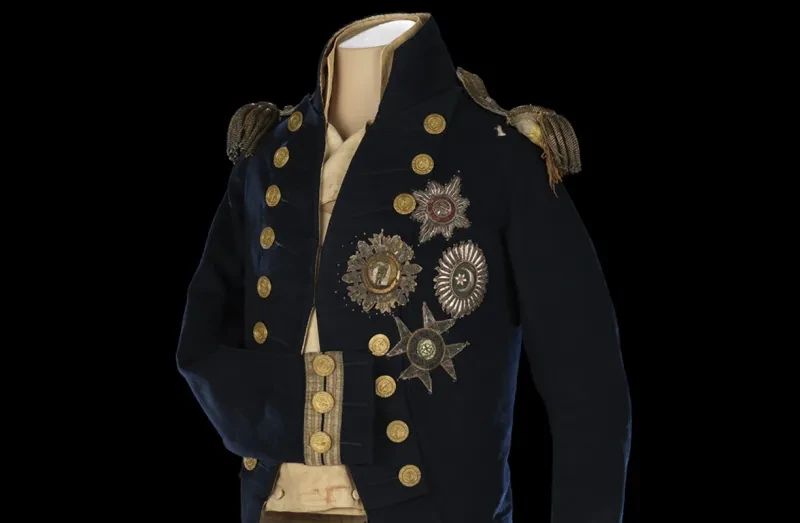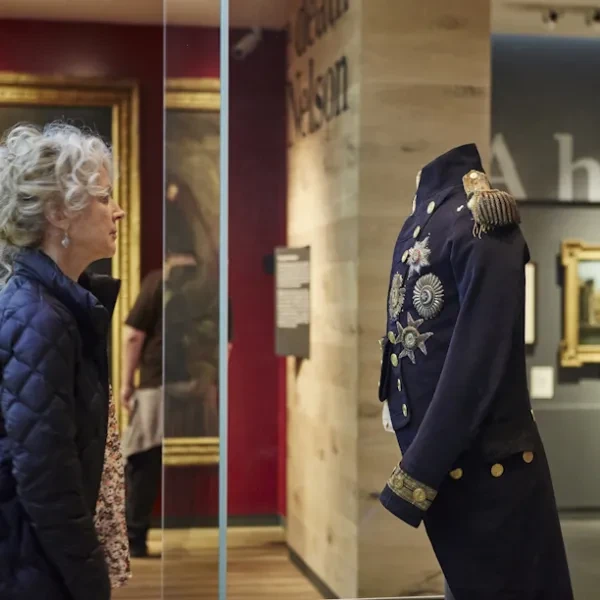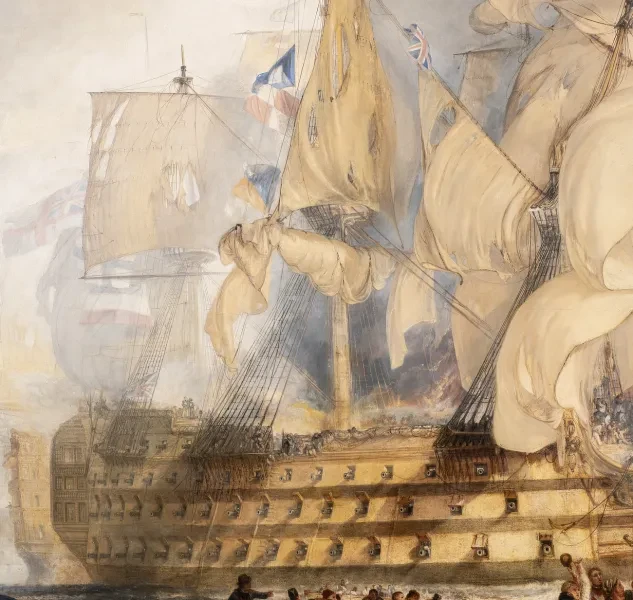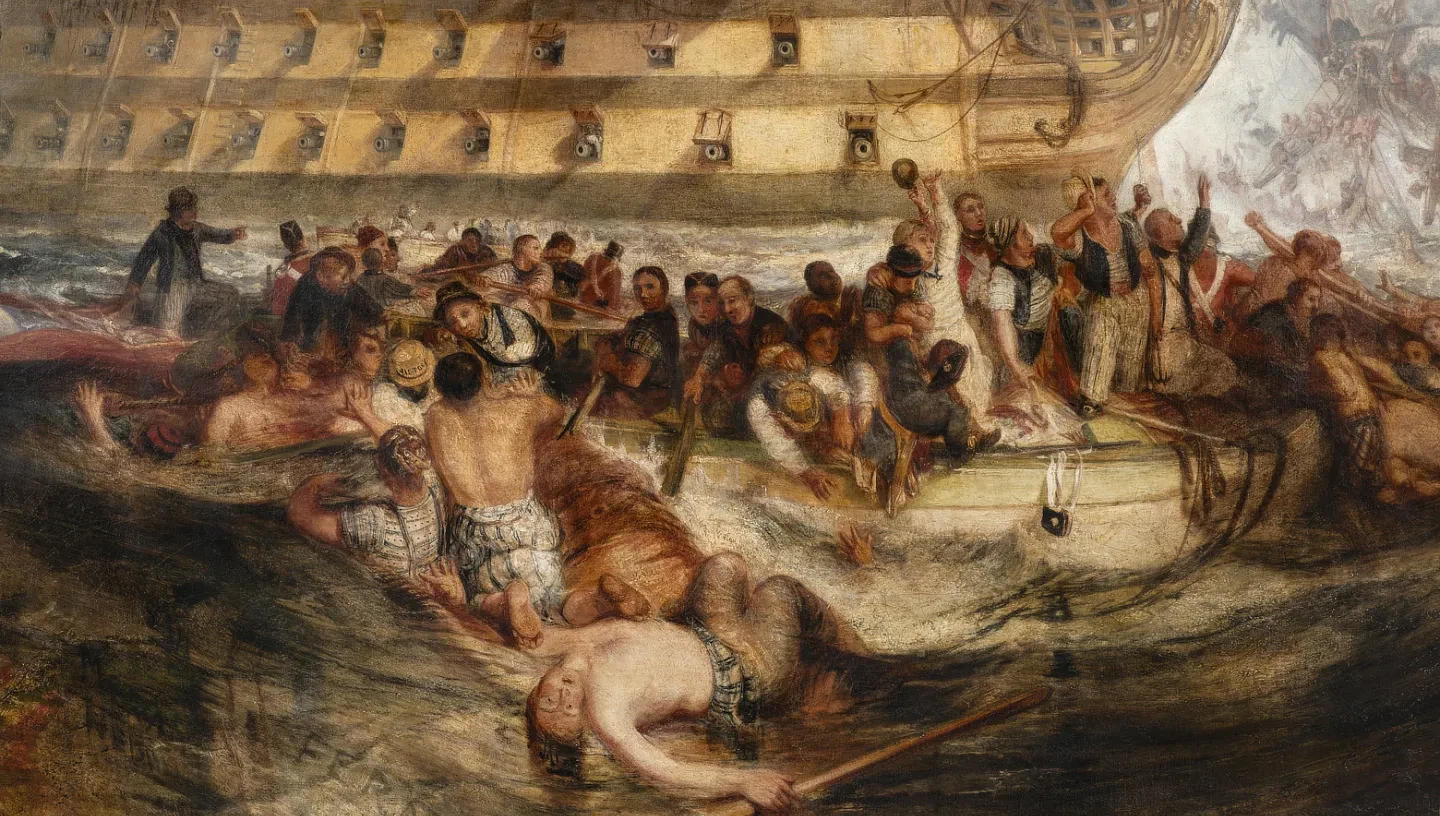
Complex, colossal and controversial – J.M.W. Turner’s The Battle of Trafalgar is a work filled with extraordinary detail.
The painting depicts one of the most famous naval battles in British history: the victory of Vice-Admiral Lord Horatio Nelson’s fleet over a combined French and Spanish force off Cape Trafalgar on 21 October 1805.
But take a closer look, and the artwork tells a more unsettling story: one of suffering and struggle, death and destruction.
From broken ships to hidden messages, uncover the details within J.M.W. Turner’s only royal commission – and see the painting for yourself at the Queen’s House.
The details within the painting
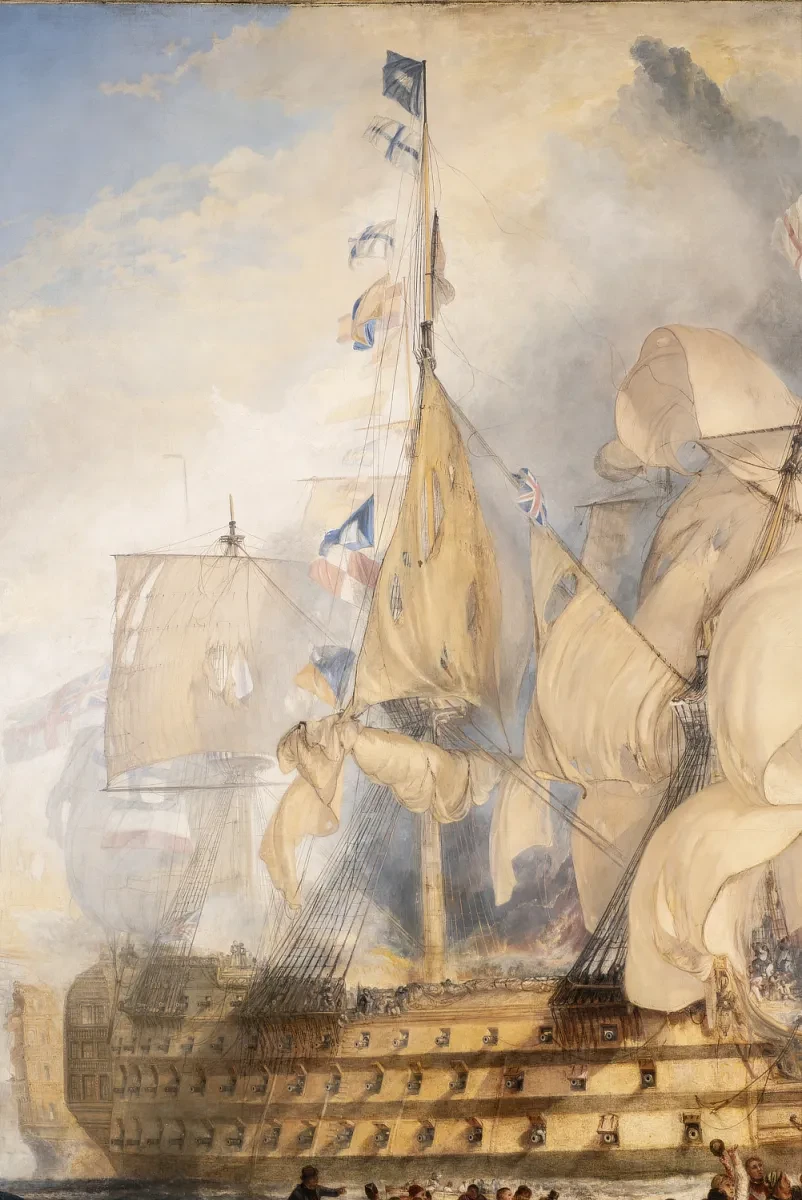
Nelson’s last words
At the centre of the painting is the Victory, Nelson’s flagship. Due to the artwork’s panoramic perspective, Turner was unable to show the death of Nelson; however, the signal flags on the ship’s mainmast reference the Vice-Admiral’s fate.
Signal flags have long been used as a means of communication between ships. The flags in Turner’s painting spell out the final three letters of the word ‘DUTY’ – a nod to Nelson’s pre-battle signal to his fleet: ‘England expects that every man to do his duty.’
Nelson was shot by a musket while on the deck of Victory and died a few hours later. According to the contemporary press, his last words were said to be: ‘Thank God I have done my duty.’
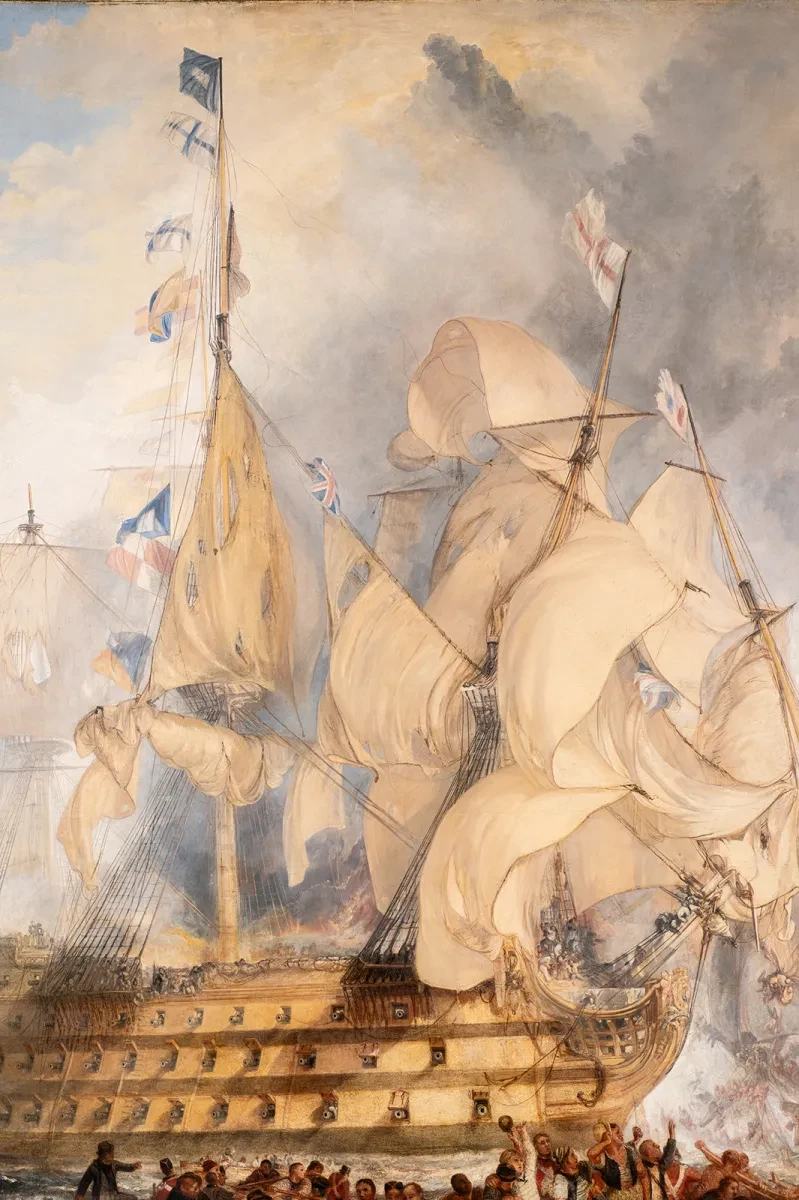
The falling foremast
Against a backdrop of thunderous clouds, Victory’s foremast topples and crashes towards the sea. This mast carried Nelson’s command flag. Its fall is therefore a powerful symbol of the Vice-Admiral's death.
In reality, the ship lost its mizzenmast during the conflict, not its foremast. This is an example of the creative liberties Turner took when making this artwork. “His intention was to capture the human drama of the battle rather than the facts of the action,” explains Katherine Gazzard, Curator of Art at Royal Museums Greenwich.
Turner’s The Battle of Trafalgar was commissioned by King George IV for a display at St James’s Palace, which celebrated naval glory.
Yet, when the painting was unveiled in 1824, critics objected to Turner’s non-chronological approach to the conflict and his invention of details, like the falling foremast. Naval historian William James accused Turner of including 'glaring falsehoods’.
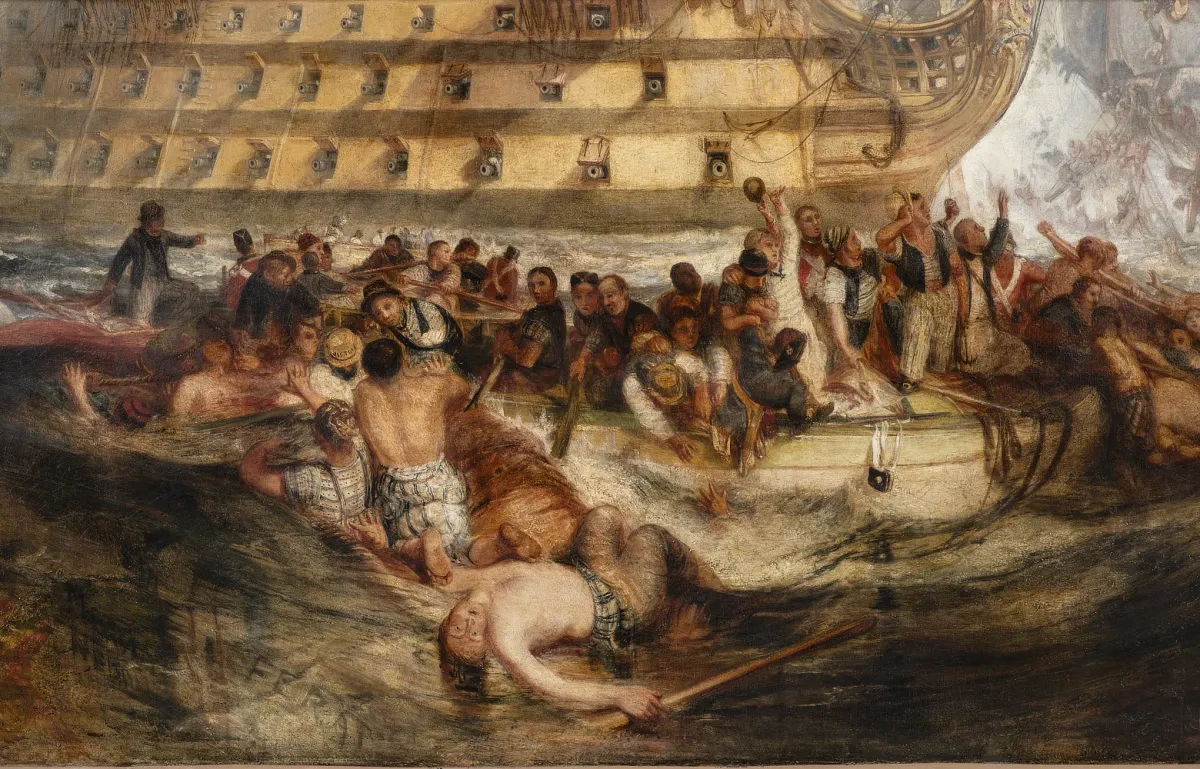
Nelson’s motto
Look closely to spot the final word of a hidden phrase written across the waves: ‘Palmam qui meruit ferat’. This Latin motto is found on Nelson’s coat of arms and translates as ‘Let him who has earned it bear the palm.’ The palm was a traditional symbol of victory, reinforcing Nelson’s associations with glory and triumph.
Nelson was awarded a knighthood and arms following his achievements at the Battle of Cape St Vincent in 1797. This victory over the Spanish fleet catapulted Nelson to fame.
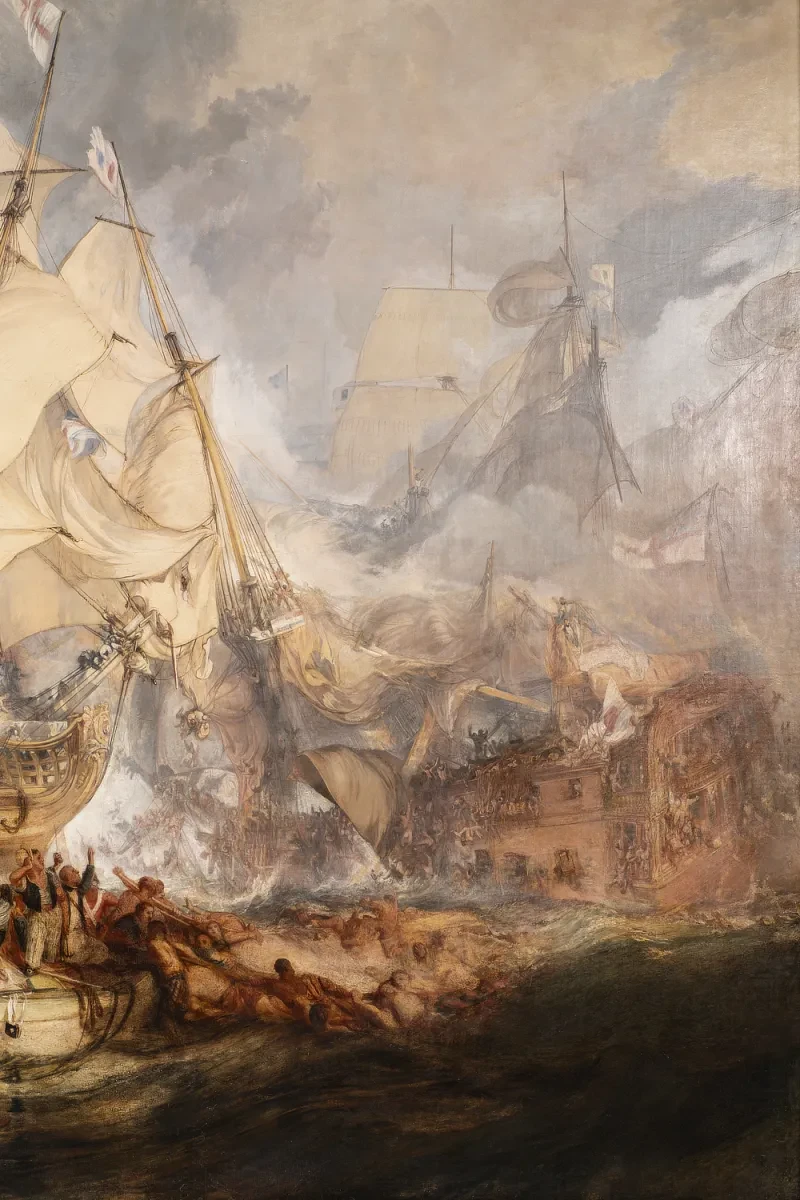
Sinking of the ‘Redoutable’
Located to the right of Victory, the French ship Redoutable tilts precariously, its bow sinking beneath the waves. This is another example of Turner’s artistic liberties: the warship had surrendered during the battle, but it did not sink until the following day.
“In compressing this timeline, Turner emphasised Britain’s triumph,” Gazzard says. “The sinking vessel acts as a symbol of the allied fleet’s defeat.”
Amidst the clouds of smoke, seafarers can be seen clinging to the ship’s ropes, while others plunge into the turbulent waters.
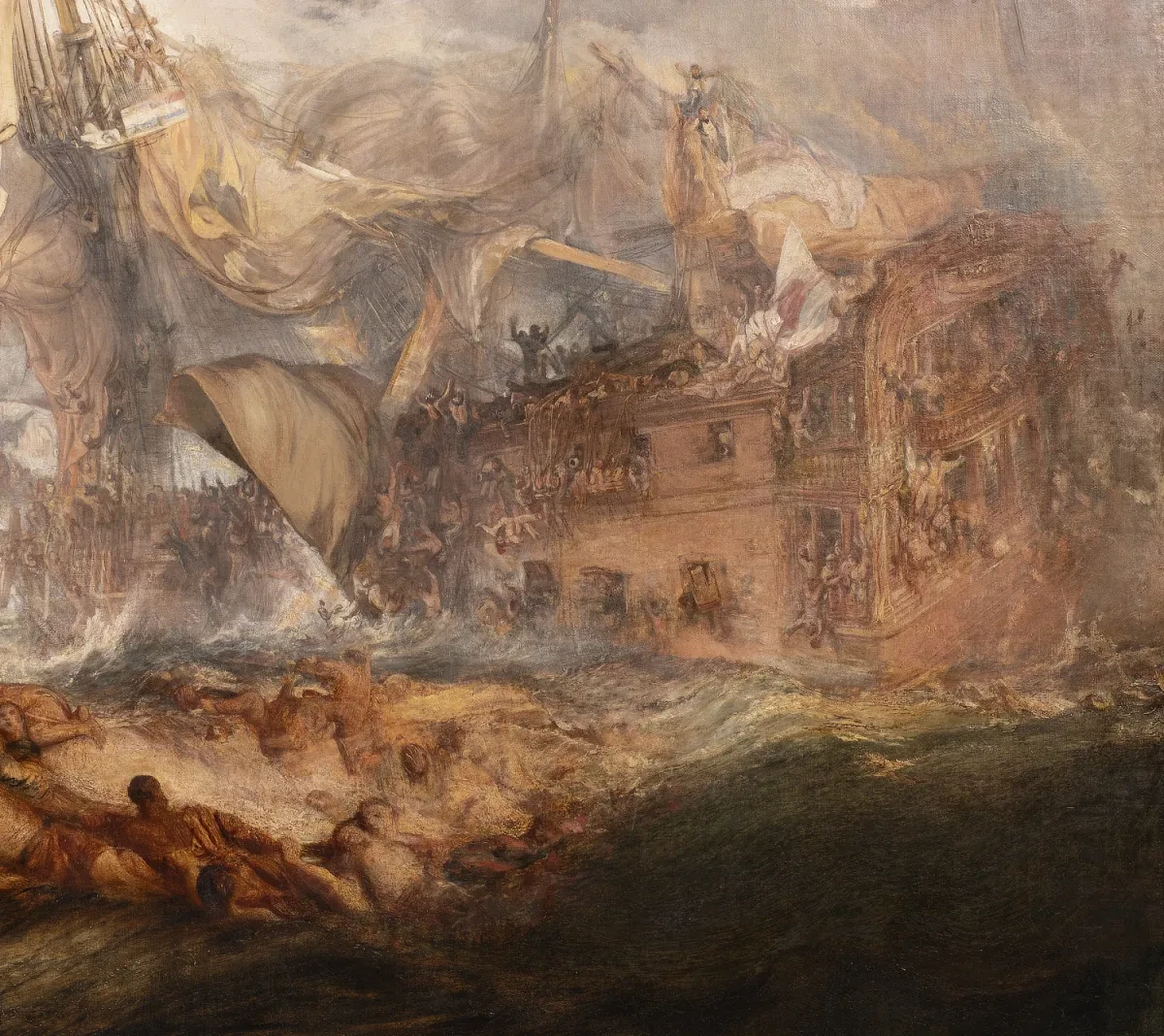
A life-and-death struggle
Unlike other marine artworks of the period, which typically depicted battles from a distance, Turner shows the human cost of war. Injured and dying men dominate the foreground, and overflowing boats struggle in the surging waves behind.
While the Battle of Trafalgar was hailed as a national triumph, the conflict resulted in immense loss. More than 4,000 people were killed, from across the British, French and Spanish fleets. “This horrifying life-and-death struggle fills the foreground of the painting, compelling the viewer to bear witness to it,” Gazzard says.
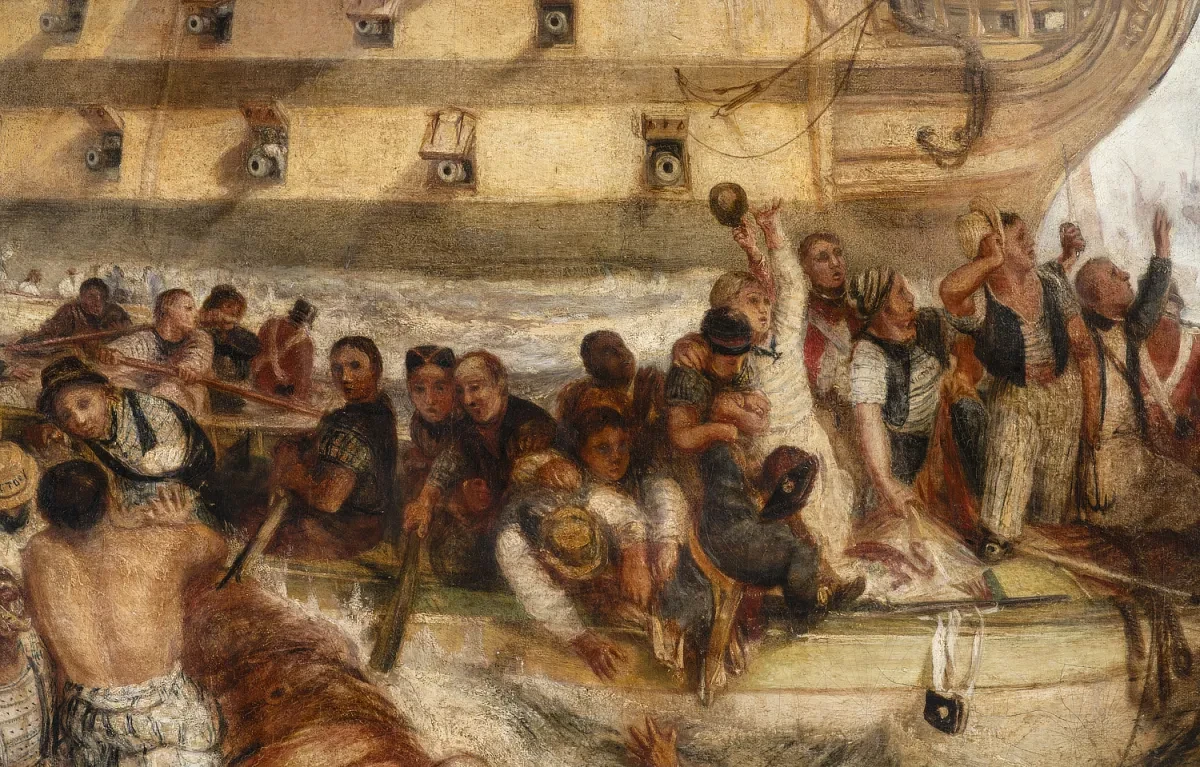
Sailors from around the world
Turner also highlights the contributions and sacrifices of the sailors who manned the Royal Navy, emphasising the force’s global crews. Two Black seafarers are shown at the centre of the painting: one raising his hands in prayer and the other swimming for safety.
Muster books from the Battle of Trafalgar reveal that as well as individuals from the British Isles, Royal Navy seafarers came from continents and regions including Africa, the Caribbean and the Americas, as well as countries such as Italy, India and Malta.
“The Royal Navy’s need for manpower during wartime meant that it became a driver of global mobility, recruiting men from around the world, regardless of ethnicity, religion or nationality,” Gazzard says.
For Gazzard, the details within Turner’s The Battle of Trafalgar create an artwork that is as complex as it is colossal. “The painting carries several layers of meaning,” Gazzard says. “It combines a celebration of maritime victory with a tribute to a national hero, an ode to ordinary sailors and a meditation on the horrors of war.”
Credits
The conservation and display has been generously supported by the Company of Arts Scholars Trust, Aurelius Charitable Trust, Leslie Mary Carter Charitable Trust, Ian M. Foulerton Charitable Trust, The Leche Trust, The Radcliffe Trust, Michael Marks Charitable Trust and The Finnis Scott Foundation.
Image credits: The Battle of Trafalgar, 21 October 1805 by J.M.W. Turner (BHC0565) © National Maritime Museum, Greenwich, London, Greenwich Hospital Collection
